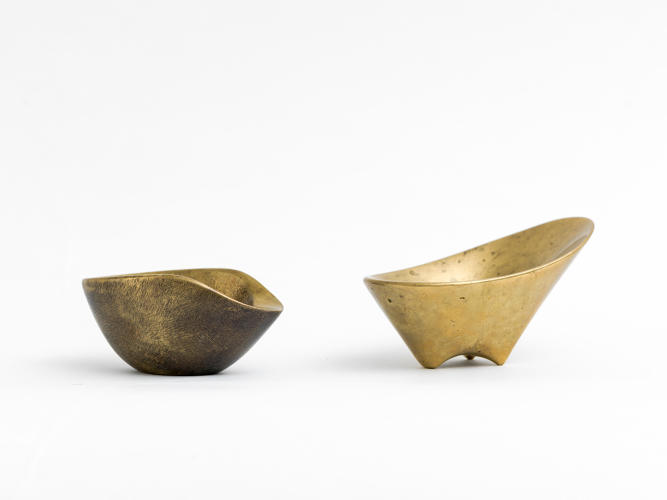
Carl Aubock II [Austrian, 1900-1957] Ashtray, Model No. 3597, 1948. Ashtray Model No. 4736, 1947. PHOTO: CoExist
In the 1930s, the central belief of the organic movement was that furniture and architecture should reflect a harmony between people and nature. In furniture design, this meant natural materials like wood, and smooth, rounded forms. The bent plywood furniture of legendary French designer Jean Prouve came out of this period, as did Marcel Breuer and his laminated birch plywood armchair with a calfskin cushion. These designers prided themselves on being dedicated to their craft, and their pieces were painstakingly made and not easily reproduced. “They saw it as a unique work that refers to nature,” says Olshin. “These pieces tend to be unique one-of-a-kind studio work that’s not easily produced in mass quantities.”
In direct opposition to those ideas, the MoMA show argued for mass-produced organic design. From then on, says Olshin, there was a tension within the movement between modernism and craft, the manufactured and the hand-made. “There was a longing for Bauhaus type attention to detail, but at the same time technology had moved on and it was possible to get more design to more people.”
The ideas put forth by MoMA stuck. In the ’50s, the architect and furniture designer Alvar Aalto—a strong proponent of natural materials and one of the most famous designers of the movement—became a huge commercial success with his mass produced furniture and lighting. Meanwhile, the woodworker furniture designer Wendell Castle held true to his dedication to craft with handmade wooden pieces. In the ’80s, Castle’s fellow woodworker George Nakashima began working with large manufacturers to produce his traditionally custom-made wooden furniture, but only under strict supervision from the designer himself.
So a careful balance emerged between the natural world and the machine-made. That tension still exists, even in contemporary design. “Today, it’s almost a combination of both, it’s nod to both sides, neither one or another,” Olshin says.
Read more here.